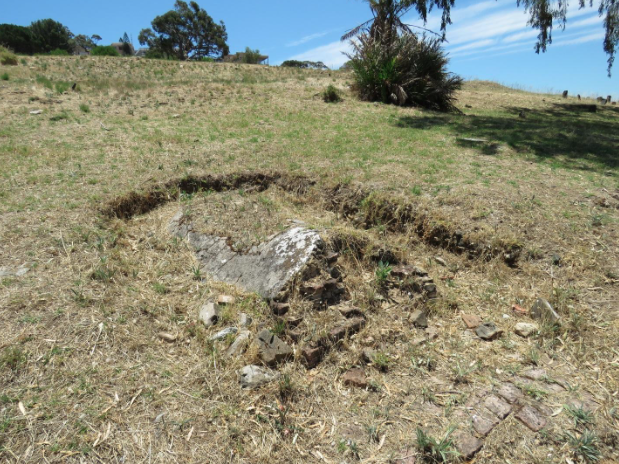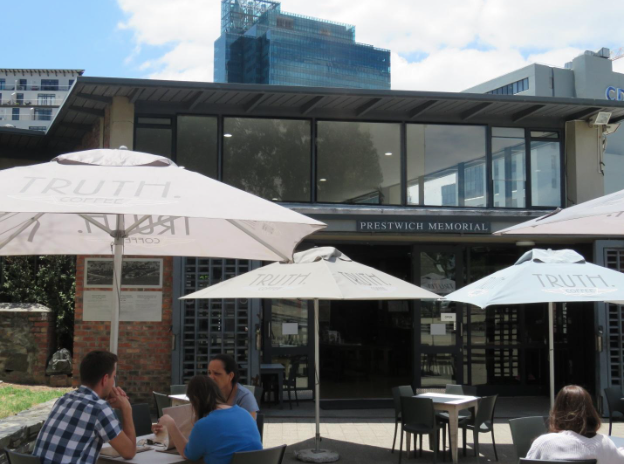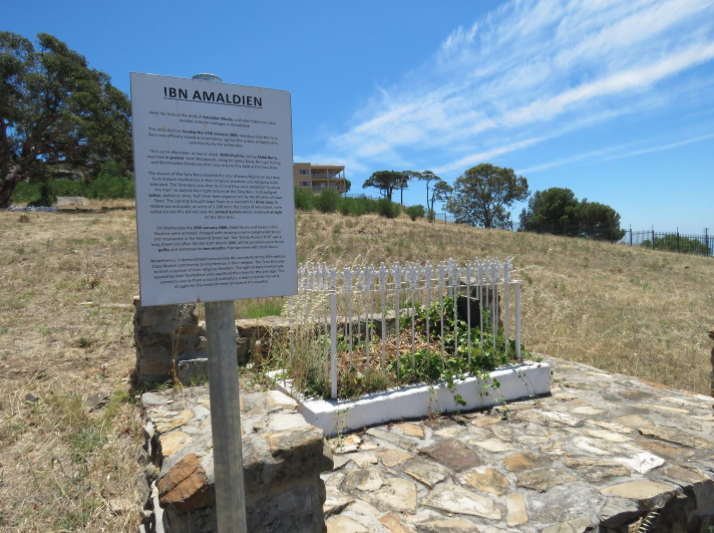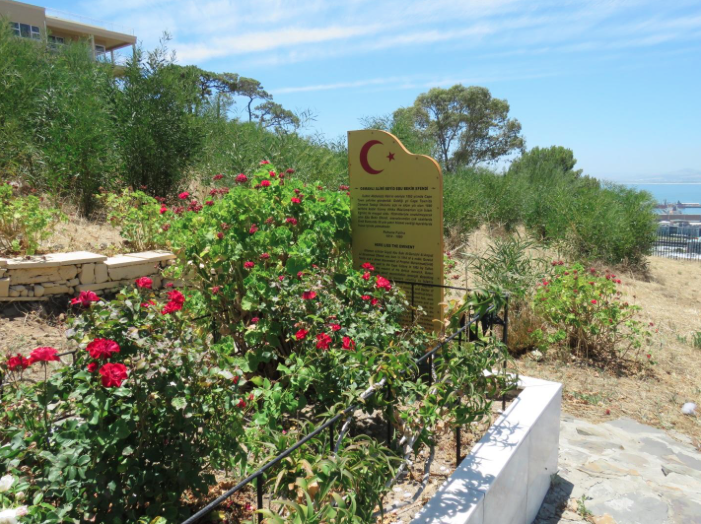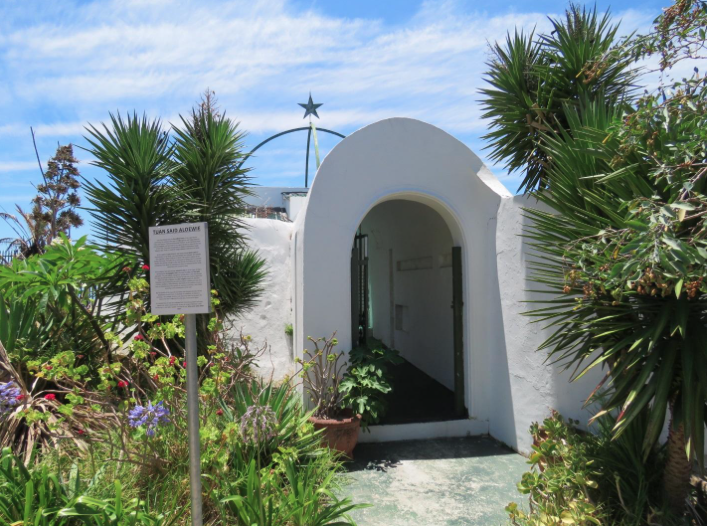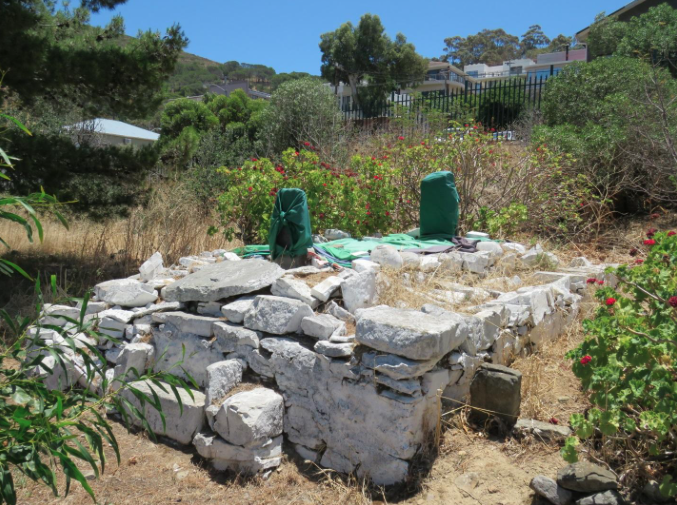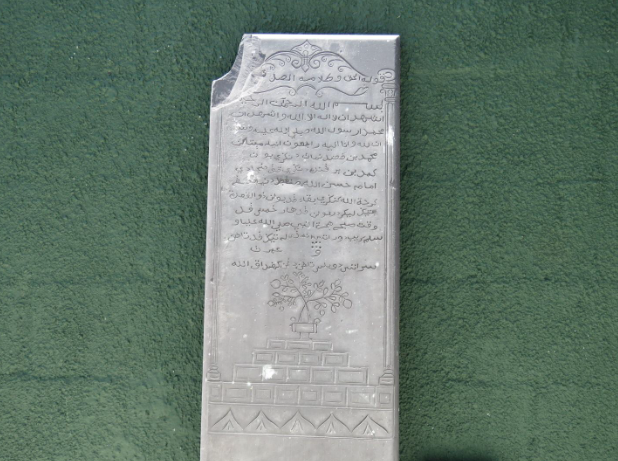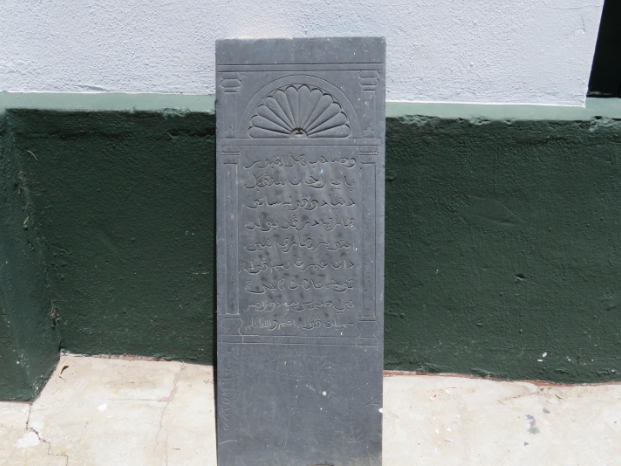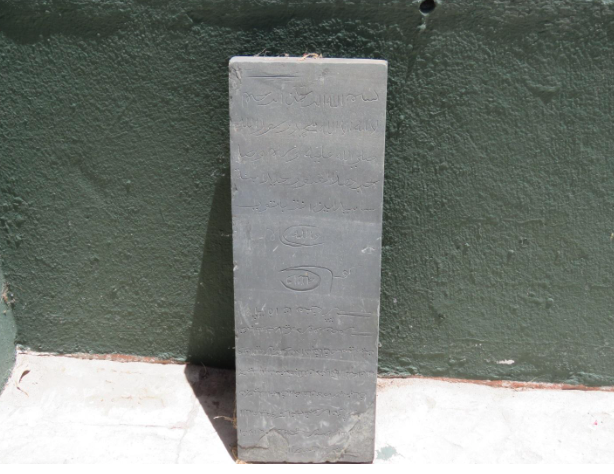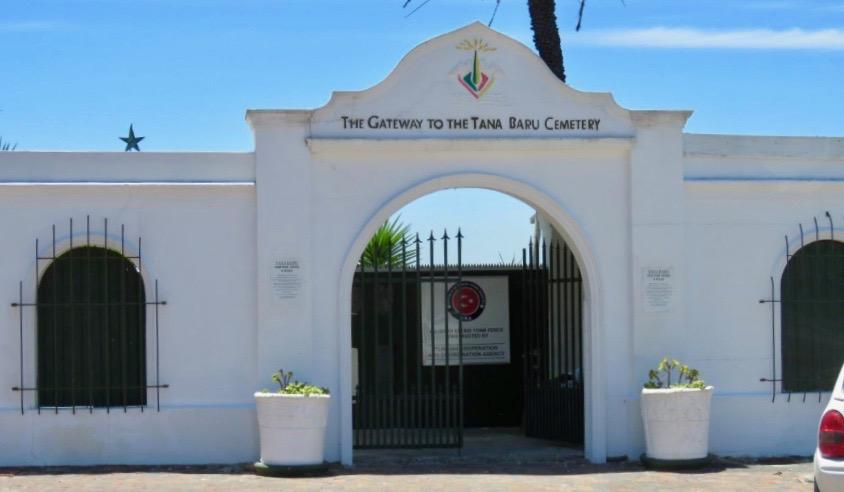
Disclaimer: Any views expressed by individuals and organisations are their own and do not in any way represent the views of The Heritage Portal. If you find any mistakes or historical inaccuracies, please contact the editor.
Sometimes an interesting question is asked. ‘Which Cemetery is the most venerable in South Africa?’ Not so easy to answer as one may think. There are some strong contenders but the Tana Baru in the Bo-Kaap, the oldest Muslim Cemetery in Cape Town, can certainly stake a very credible claim. This is the only historical cemetery in South Africa of which an informative book has been written, The History of the Tana Baru, by Achmat Davids. This book was partly written to promote the preservation of the Tana Baru, the resting place of some of the pioneers of Islam in Cape Town, but more of this later.
The Tana Baru Cemetery has its origins in the involuntary migration of slaves from India, East Indies, Africa, Ceylon (now Sri Lanka), Malaya and Mauritius to the Cape. It is thought that between 1652 and 1818 close to 70% of immigrant slaves to the Cape came from India and the East Indies, followed by about 27% from Africa with the remainder from Sri Lanka, Malaya, and Mauritius. Some slaves were already adherents of Islam upon their arrival at the Cape and were very effective in proselytising other slaves and the free Blacks because of the shared bondage of racial oppression and social background.
The name Tana Baru is derived from Malay or Melayu, as it is sometimes called. Melayu was the eighteenth century trading language of a vast geographical area stretching from Madagascar to China and commonly spoken by the Cape Muslims during this period. ‘Tana’ means ‘Ground’ and ‘Baru’ means ‘New’, hence ‘New Ground’.
No clear evidence exists as to when the Tana Baru was first used as a burial ground. Davids quotes a statement by Thunberg in his Travels in Europe, Africa and Asia, describing a Chinese burial in 1772 that in Davids’ view, could only have taken place at the Tana Baru. Thunberg’s description reads, ‘On my return to town I had the opportunity of seeing a Chinese burial. In their burial ground at a short distance from the city, small rattans are stuck up, fastened together with cotton-thread, so as to form an arch or a vaulted roof over the tomb.’ (See photo of Chinese tomb below). Davids argues that since the Cape Muslim community was much larger than the Chinese one, they would have buried in the same vicinity. However, a footnote in the reprinted copy of Thunberg’s book by the Van Riebeeck Society disagrees, stating the cemetery to be situated North-West of town where the gibbet is now commemorated by Gallows Hill Road.
Nevertheless, whether or not Davids is correct is immaterial, the Tana Baru is still the oldest extant cemetery in South Africa.
An old grave in the Chinese precinct of the Tana Baru matching the general description of Chinese graves by Thunberg. (SJ de Klerk)
Religious freedom in the Cape was officially proclaimed on 25 July 1804 following an ordinance to this effect by Commissioner de Mist of the VOC. Once religious freedom had been granted, a cemetery for use by the Cape Muslim community was the logical next step.
The Tana Baru consists of three independent burial grounds lying adjacent to one other, thus forming one piece of land. Two of the burial grounds are on land granted to the Cape Muslims in 1805 and 1842 as public burial grounds. The third burial ground consists of private plots purchased by prominent Cape Imams, as burial grounds for their respective congregations. It was a traditional practice in the nineteenth century for Imams to purchase properties in trust for their congregations as either mosque sites or burial grounds. A small precinct close to the Cemetery Gateway was reserved for Chinese burials.
Unfortunately, it is not known how many burials have taken place at the Tana Baru, but based on its existence in excess of 80 years and the size of the Cape Muslim community, a considerable number of burials must have taken place here. This burial ground was in existence during the two smallpox epidemics of 1858 and 1882 when fatalities amongst the Cape Muslims were high, because of their resisting inoculation on religious grounds. One should therefore not be influenced by the absence of tombstones to assume that there have only been a small number of interments. Older photos of the Tana Baru show a far greater number of tombstones than one observes today. It seems that many of the tombstones were removed over the years by souvenir hunters or callously covered by rubble. This was corroborated by the Cemetery Caretaker who informed me that a staff member at one hotel had to prevent an overseas tourist from walking off with a hand engraved tombstone from the Tana Baru.
The Tana Baru was the main burial ground of the Cape Muslim community until 15 February 1886 when the Cape Authorities closed it down, for what it deemed public health concerns. Problems with the cemeteries in Cape Town began emerging during the height of the smallpox epidemic of 1858. Their general crowdedness, poor condition and location close to the centre of town were all perceived to cause health problems. In 1883 the Cape Parliament passed the Public Health Act No.4 of 1883 which laid down the control of town burial sites. This resulted in the closure of the Somerset Road Cemetery and more importantly to the Cape Muslim community, the closure of the Tana Baru. The Muslims believed that the carrying of the dead to their last resting place was a religious injunction not to be violated under any circumstances and the alternative burial place offered at Maitland was considered too distant.
The Cape Muslim community under the leadership of Abdol Burns presented evidence that since the Muslims buried their dead five to six feet underground on the Lion’s Rump, their graves were far less of a health threat than graves in the Somerset Road Cemetery, where burials took place in shallow vaults or graves, no doubt because of the shallow water table. Nonetheless, the Authorities proceeded to close both these and other cemeteries in and around Cape Town.
Prestwich Memorial and Ossuary of remains previously buried in the vicinity of the Somerset Cemetery. On the extreme left is a remnant of the wall around the Dutch Reformed precinct of the Somerset Cemetery. Behind the umbrella on the left is an enlarged photo of this old cemetery. (SJ de Klerk).
The Muslim community was bitterly opposed to the closure and when two days later a child of Amaldien Rhode (a Muslim fisherman who resided in Woodstock) died, the community refused to bury the child in any other cemetery. That same afternoon 3000 Muslims marched in protest from Woodstock to bury the child at the Tana Baru, notwithstanding the authorities’ recent notice forbidding further burials there. Rioting broke out after the burial and Cape Town was disrupted for three days.
Grave of the child of Amaldien Rhode at the Tana Baru. ‘IBN’ means ‘child of’. (SJ de Klerk)
The Tana Baru has always been regarded as the most sacred of the Muslim burial grounds in Cape Town. Within its grounds are buried some of the most respected founders of the Cape Muslim community. Davids argues that without their contribution it is doubtful if Islam or the distinctive culture of Muslims at the Cape would have survived.
There is at least one grave that not only has historical-religious relevance to the Cape Muslim community, but because of linguistic association is also important to Afrikaans speaking people.
This is the well signposted grave of Abubakr Effendi (1835-1880) near the top end of the cemetery. Abubakr Effendi is certainly one of the more interesting immigrants to the Cape. ‘Abu’ is Arabic for father and ‘Effendi’ is an honorary title usually only given to a learned person. Abubakr studied at the madrassah in Sherizur now in Kurdistan, then in Constantinople and finally in Baghdad. Following a request to the Ottoman Ambassador in London by the Cape Muslim community, Abubakr Effendi, a recognised Turkish Islamic scholar was sent to the Cape by the new Ottoman Sultan to provide religious education and to assist in resolving prevailing doctrinal differences. He founded the mosque at the corner of Long and Dorp Streets and in 1869 wrote the ‘Bayan-al Din’ (An Explanation of the Religion). It is a bilingual work in Arabic and Afrikaans (then considered by some to be a Cape Malay dialect) with a preface in Turkish, Arabic and Afrikaans. It is written in such a way that an Arabic sentence is followed by the Afrikaans translation and explanation thereof, a writing tradition which became known as Arabic-Afrikaans. This unusual publication of 354 pages was printed in 1877 in Constantinople as a gift by the Ottoman Government to the Cape Muslim community. It may well be the oldest extant publication in Arabic-Afrikaans where the colloquial Afrikaans of the Cape Muslims is translated into Arabic script. According to Van Selms this publication was preceded by only two earlier Afrikaans publications, namely the well-known Zamenspraak (‘Conversation’ between Klaas Waarzegger and Jan Twyfelaar concerning the separation of the Eastern Province from the Western Province) by L. M. Meurant and an anthology of religious poems by D. C. Esterhuyse, both printed in 1861. The Zamenspraak published in April 1861 as a booklet of seventy five pages is still considered to be the first publication in Afrikaans. Van Selms adds that the importance of Abubakr’s publication is enhanced by its omission of the historical Dutch spelling of the time, thereby providing invaluable insight of how early Afrikaans words and terms would have been pronounced in the last quarter of the nineteenth century.
Picturesque grave of Abubakr Effendi midway up the slope of the Tana Baru. (SJ de Klerk)
It is admirable how Abubakr ingeniously manipulated the lettering symbols of the Arabic phonetic science of Tajwid. ‘Tajwid’ means to preserve the meaning of the revealed words of Allah in sound and expression, protect it from any alteration and retain the unique method of recitation. Through this manipulation Abubakr was able to create representation of Afrikaans sounds in Arabic script where such lettering had not previously existed.
Abubakr Effendi was not particularly successful as a theologian in Cape Town, mainly because of differences among the Muslim rituals and life governing rules of the four schools of Muslim jurisprudence. These four schools are not sects as they recognise one another as orthodox. However, because most of the Cape Malays hail from Indonesia they adhere to the Shafi doctrine, whereas Abubakr coming from the Ottoman Empire expounded the Hanafi’i doctrine. Perhaps, because of the above, he is not regarded as a ‘Karamat’ or ‘Saint’.
The most prominent of the ‘Karamats’ buried at the Tana Baru is probably Tuan Guru. His mausoleum is just behind the gateway building and is of modern face brick construction, which appears somewhat incongruent with the historical nature of the Tana Baru. ‘Tuan Guru’ meaning ‘Mister Teacher’, is regarded as the pioneer of the Cape Ulema (religious scholars) and was the first Chief Imam at the Cape. He was a prince from Tidore in the Trinate Islands and banished to the Cape in 1780. The full reasons for Tuan Guru’s banishment are not known other than that he and three others were suspected of conspiring with the British, probably to overthrow the Dutch authorities. They were sent to the Cape and imprisoned for some years on Robben Island.
While on Robben Island Tuan Guru wrote a book on Islamic Jurisprudence, called Ma’rifah al-Islam wa al-Iman (Manifestations of Islam and Faith), which became the main source of reference of the Cape Muslim community in the nineteenth century. It was their basic reference on religious issues and was even cited as such in a Cape Supreme Court litigation matter in 1873. The manuscript is written in Arabic with interlineal translations in Melayu and occasionally Buganese (Buginese), in Arabic script. According to Davids, the custom of writing Islamic literature in Melayu and Portuguese, using the Arabic script was common to the East Indian Archipelago in the eighteenth century and practiced by many Muslim luminaries who were exiled by the Dutch to any one of their global colonial possessions. Davids states that such documents have not only been discovered in Cape Town, but also in Suriname. It is said that no book had more influence on the Cape Muslims than this handwritten book of Tuan Guru. In it he declared his Shafi doctrinal adherence, resulting in the majority of the Cape Muslims following this school of thought.
He also wrote from memory some copies of the Quran of which two have survived, apparently containing remarkably few textual errors.
Tuan Guru established the Auwal Mosque in Dorp Street, which played an important role in shaping the distinctive culture of the Cape Muslim community. Tuan Guru had two sons, Abdol Rakiep who died in 1834 before he could fulfil his potential, but the younger son Abdol Rauf became Imam of the Nurul Islam Mosque in Buitengracht Street and then of the Claremont Main Road Mosque. Both are buried adjacent to their father’s shrine, although their graves can no longer be identified with total certainty.
Mausoleum of Tuan Said Alawie. (SJ de Klerk)
Very close to Tuan Guru’s shrine is the beautiful white washed mausoleum, the ‘Karamat’ of Tuan Said Alawie. The title ‘Said’ attached to his name implies his ancestral connection with the holy prophet. He was the first official Imam of the Muslim community. Tuan Said Alawie arrived at the Cape in 1744 having been banished to the Cape to be detained in chains for the remainder of his life. It is thought that he might have originated from Mocca in Yemen. He was imprisoned on Robben Island for some eleven years before being released. On his release he elected to remain at the Cape to propagate Islam amongst the free Black and slave populations. This was a hazardous consideration as the Cape was still governed by the Statutes of India, which amongst others, prohibited the practice and teaching of Islam. By 1775 the slave population had increased to more than half of the total Cape population. In an effort to curtail the growth of the slave population the Cape Authorities introduced various ‘Placaaten’ (ordinances) which, amongst others, prohibited the passing on of Christianised slaves as inheritance. This resulted in Christianised slaves being set free upon the death of their masters. The colonists saw these ordinances as infringement on their slave ownership rights, and instead of converting their slaves to Christianity, encouraged them to embrace Islam. These regulations, which had been specifically implemented to promote Christianity among the slave population, instead only served to promote Islam.
Grave of Paay Schaapie at the top end of the Tana Baru. (SJ de Klerk)
Another interesting grave is the shrine of Paay Schaapie also known as Tuan Nuruman. His grave is quite simple and at his request no wall is ever to surround it. Schaapie was banished to the Cape from Batavia in 1770 and eventually lived as a freed slave in the Slave Lodge. He was apparently a man of simple life-style with a particular fondness for children and animals. Not far from his grave is a well he dug to provide drinking water to the animals in the area. He is said to have had the ability to predict the future and his talismans to protect people from perceived dangers were highly sought after.
Finally, both the Cemetery Gatehouse and the cemetery contain some very attractive examples of hand engraved tombstones. Regretfully, as is the case in most of South Africa’s historical cemeteries, the names of the engravers are not inscribed on these tombstones.
An attractive hand engraved tombstone on slate. Engraver unknown. (SJ de Klerk)
The text is entirely in Malay. It begins with the basmala (‘In the name of Allah, the Most Gracious, Most Merciful’), followed by the profession of faith (the shahada) and then the standard phrase ’From Allah we Come and to Allah we Return’. The name of the deceased is somewhat illegible on the tombstone but the next sentence probably reads along the lines of, ‘This is Muhammed bin Quasd, from the land of Bun who then moved to the Cape and became Imam… died and returned to the mercy of Allah at the time of subuh (the dawn prayer) on Friday on the 3rd (illegible) day of the month of Dhul Qa’ada (the 11th month of the Hijrah year) 1263 (1847 CE), at the age of 112 with the Will of Allah.’
Another fine example of a hand engraved tombstone. Engraver unknown. (SJ de Klerk)
The text is in Malay and reads as follows’ ‘The owner of this grave is Paai Rahan (possibly Rahman) who died on the 21st day of the month of October (written as ‘Abtuber’) on a Monday. His age was 57 years. 1296 of the Hijrah (calendar i.e. 1879 CE). God Knows Best.’
Interesting example of a hand engraved tombstone with two separate texts – one upside down from the other. Engraver unknown. (SJ de Klerk)
This is a curious tombstone with two separate texts one upside down from the other. The text at the top of the image begins with the basmala, then the shahada followed by two lines that are unfortunately difficult to make out. The symbol or seal towards the bottom reads, ‘And God knows Best’. The text at the bottom again has the shahada The remainder of the text is in Malay and appears to provide details of the deceased (‘this is the grave of …’ then ‘the owner of this grave’s name is …‘) but is difficult to read because the stone is slightly damaged and the inscription is not clear. What does stand out is the year 1021 (which converting Hijrah years to Gregorian would be equivalent to 1603 CE., but since this would be prior to the Dutch colonisation, is probably 1201 written backwards (1787 CE).
The date on this tombstone may confirm what Davids strongly suspected, namely Cape Muslims have been burying their dead at this site long before it was officially granted as a cemetery in 1804.
Most historic cemeteries face the problem of abandonment or total neglect but that is not the problem the Tana Baru faces. Its problem is something different; that of encroaching gentrification and the stunning views enticing owners to sell some of its land to developers. One can only hope and pray that the proposed process to declare the Bo-Kaap a historical area, will also serve to preserve the Tana Baru.
The entrance to the Tana Baru is off Dawes Street in the Bo-Kaap district. It is about one hectare in extent and safe to visit. Wear good walking shoes and bring a hat and some drinking water as there is not much shade on the hill. Kindly also keep in mind the Karamats are considered to be sacred sites therefore the wearing of appropriate attire, is required.
The Cemetery is open every day from 09h00 to 18h00.
The author wishes to express his appreciation to Dr. Saarah Jappie from the History Department of Wits University who kindly agreed to translate the epitaphs on the tombstones shown in this article. It made the cemetery come alive!
About the author: SJ De Klerk held many senior positions in HR during a distinguished career in the private sector. Since retiring he has dedicated time and resources to researching, exploring and writing about South Africa's historical cemeteries.
Sources
- Bradlow F. R & Cairns M. 1978. The Early Cape Muslims. A. A. Balkema Cape Town.
- Da Costa Y. & Davids A. 1994. Pages from Cape Malay History. Shooter & Shooter(Pty) Ltd. Pietermaritzburg.
- Davids A. 1985. The History of the Tana Baru. The Committee for the Preservation of the Tana Baru. Cape Town.
- Davids A. 1993. The Early Afrikaans Publications and Manuscripts in Arabic Script in Festschrift in honour of Frank R. Bradlow compiled and edited by Pieter E. Westra and Brian Warner. Friends of the South African Library. Cape Town.
- Kanemeyer J. C. 1984. Die Geskiedenis van die Afrikaanse Literatuur Band 1. Academica. Pretoria and Cape Town.
- Thunberg. C. P. 1986. Travels at the Cape of Good Hope 1772-1775. Second Series No. 17 Van Riebeeck Society. Cape Town.
- Van Selms A. 1976. Abu Bakr Effendi in Suid-Afrikaanse Biografiese Woordeboek Deel 1. Raad vir Geesteswetenskaplike Navorsing.Tafelberg Uitgewers. Kaapstad.
Comments will load below. If for any reason none appear click here for some troubleshooting tips. If you would like to post a comment and need instructions click here.

